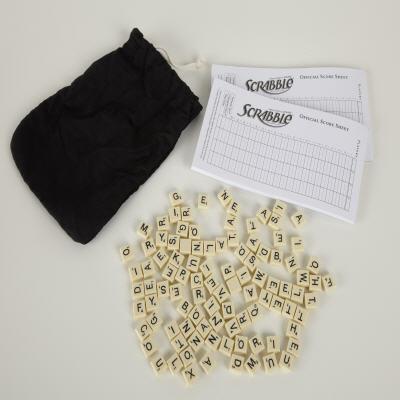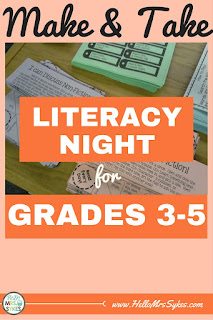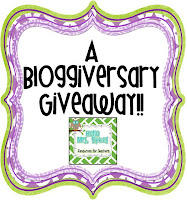It feels like almost everything I want to share with teachers, parents, and administrators is about the importance of Word Study. There are many different ways to approach word study in the classroom. During this new series of blog posts, I'm hoping to share many techniques I implemented and used successfully with students in the past. I hope you'll tune in on Wednesdays...
Word Games are an effective method to encourage students to "play" with words. If you play word games often, you may be surprised at the level of discourse students use when discussing their words. As you hit the thrift shops and yard sales preparing for your classroom, keep your eyes open for a few of these games. I always do a bit of word work as we begin our Guided Reading group, and when I don't have a particular skill they need to work on that session, we'll play a word game for a few minutes. Read on, and I'll tell you how I *always* teach my kiddos how to play...
 |
| I bought this Boogle game at a yard sale... |
Boggle. Hands-down. If you can't find anything else, find this game. I bought mine at a yard sale for 50 cents, 'cause that's how I roll... :) Here's how I teach students in grades 1-5 how to play Boggle in a small group.
 |
| Boggle = awesomeness |
- Explain how the letters must be connected. I show them a "practice" round of Boggle, like the picture above. (Point out the "difficult letters," like H and E - which could be mistaken for I and M, respectively.) You can make HOG. You can't make FROG, because the F is not connected to the other letters. You can also spell WATER (use the W in the bottom left corner to begin). Letters should be "connected" either up-down, side-side, or diagonally.
- Pass out dry erase boards and markers. ***Explain that they may not cover their work.*** We are doing this to work on words, not to win a ton of points, so we will not be keeping score.
- Each student writes down the words they find on their whiteboard. They do not talk to others while they look for words - we will have time to share our words after time is up. They can write down words you see on a neighbor's board IF 1) you can find it on the Boggle board and 2) your partner spelled the word correctly. (Right now, many of you are indignantly asking if I allow them to cheat... trust me. It's a crutch many of them will not need for very long!)
- You participate, also. Grab a whiteboard and look for words. Make sure not to cover your board, either. (They love this part!) See my example board below...
- After a couple of minutes, or a student begins to get antsy, say, "Time is up. Caps on markers. Markers down." Go around the group and allow each student to tell a word they found. Have them point at the letters so the group can see the word. Be sure to share one word you found, too. Then erase and play again or move on to something else. Total time spent = 5 minutes.

This is what my board might look like: (Please note - I'm sure I missed quite a few words. That's the fun of the game. You don't spend all day on it - just a few minutes. And you get to
play with use dry erase markers, which is extra special.) Want a way for students to record their Boggle words? Click on the picture below for a
little freebie you can use in the classroom.
Scrabble. Another great one for the yard sales and thrift store. Once they hit 2nd grade, they can handle Scrabble using the "Classroom Rules." Here's how I teach the kiddos how to study words using this game:
- Explain that each word must connect to an existing word. For example: if "hat" is on the board, you can build using the H, the A, or the T, or you can add on to the word and turn "hat" into "that," "hats," or "hate."
- Because they are playing this to work on words, not their addition skills, I have them ignore the numbers and keep score by the length of the word they made. Using the example from above, player 1 would get 3 points for the word "hat" since it has 3 letters. If player 2 turned "hat" into "hated" their score would be 5 because hated has 5 letters. This is just for the sake of simplicity, since we are only spending 5 minutes playing this game, and I don't want to spend the 5 minutes teaching about triple word scores, etc. We move on...
- Students keep track of their score on their white board. When time is called (ie - about 5 minutes or until someone gets antsy!) the person with the largest score is the winner. We clean up, and we move on to something else.
Word Family Card Games. These are games that I created ages ago. (Note the clip art that needs an update!) I use these for about 5 minutes at the beginning of a Guided Reading lesson, played similarly to the card game, Uno. Click on the pictures for more information.
Next Wednesday - Easy and cheap manipulatives and resources for Working With Words! See you then! :) Questions, comments, or issues you want me to cover, let me know! Thanks!!












This comment has been removed by a blog administrator.
ReplyDeleteThank you for the boggle sheet! I have a boggle board on my language arts focus wall so it will be helpful:) Have you heard of "Upwords?" It is like "Scrabble" but students get to build up so they can change words (ex. "lock" may be changed into "dock" by placing a "d" on top of the "l"). My kids love it:)
ReplyDeletePrimary Classrooms are Oceans of Fun
I love this kinds of games and I know my students will too!
ReplyDeleteLoved your classroom rules for the scrabble game.
ReplyDeleteKaylee's Education Studio
Great Ideas! Thanks for sharing !
ReplyDelete